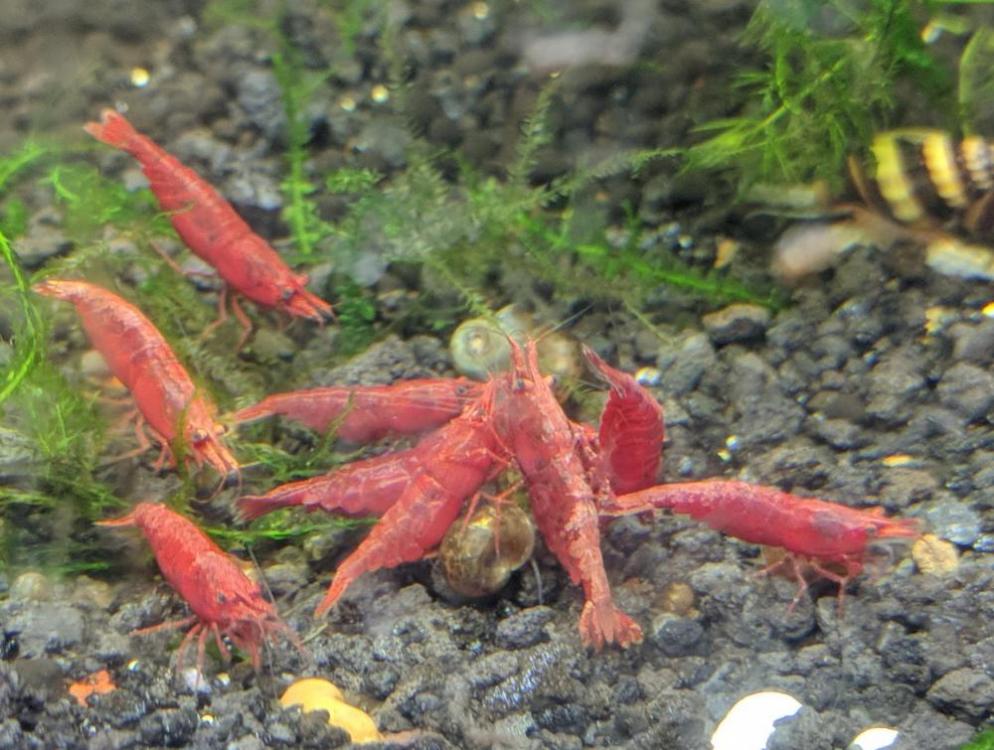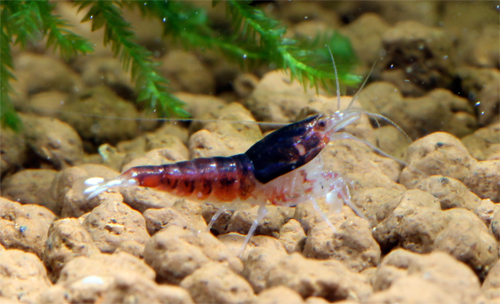If you’ve been an aquarist for some time now, perhaps you’ve already heard the term “culling” or “cull shrimp” before. Outside of fishkeeping, “culling” is defined as reducing the population of a certain species through selective slaughtering.
In fishkeeping, however, cull shrimp refers to leftover shrimp that are considered not good enough for the breeder’s standards. Unlike the non-fishkeeping definition, culling shrimp doesn’t necessarily mean killing unwanted shrimp. Sometimes, they are sold for lesser value or raised as live feed for other animals.
In this article, we’ll explore the full definition of cull shrimp and see what exactly culling means when it comes to caring for aquarium shrimp.

Table of Contents
What is a cull shrimp?
In simple terms, cull shrimp refers to a shrimp that doesn’t fit the standards of its breeder.
Most of the time, this refers to the color of the shrimp, which is the most common trait that breeders breed for.
For instance, shrimps that are known to have a blue color are expected to exhibit the coloring that their species is known for. If they look pale or have a non-consistent coloring, breeders will consider them a “cull,” and therefore not good enough.
Since they’re not good enough, breeders do one of three things to cull shrimp. One, they’re sold for a cheaper price, two, they’re given away to aquarists who just want them as a pet, and three, they’re fed to other animals who love the tasty shrimp treat.
What causes cull shrimp?
There are many things that can cause cull shrimps. One of the most common reasons is a breeder that does too many inbreeding sessions.
A severely inbred shrimp will have bigger chances of having deformities, abnormalities, and other unwanted traits. The healthiest shrimps come from a wide gene pool, typically one that doesn’t have any major issues as well.
Another reason is an irresponsible breeder who wasn’t careful with the breeding process. If they just let the shrimps breed randomly, that would mean that the best possible match wasn’t ensured.
Are cull shrimp bad?

Cull shrimp aren’t inherently bad by any means. Usually, they just don’t look as “perfect” as a reputable breeder would like them to be.
One example is a blue dream shrimp that isn’t as blue as the others in its colony. Just because it’s paler than others doesn’t mean it’s an abnormal shrimp. It just means that the coloring is less vibrant. And it definitely doesn’t mean that it can’t give birth to more vibrant blue dream shrimps.
However, there are some types of deformities that you don’t want to take a chance on. For instance, shrimps that are missing body parts or have multiple of the same body parts should not be bred. Although the chances of them giving birth to deformed young shouldn’t be that high, it’s still much better to just not take the risk at all.
Why do people cull shrimp?
The main reason that people cull shrimp is to make sure that they’re maintaining the best possible shrimps within the colony.
If you’re a breeder and you keep every single shrimp you breed, then you won’t be able to get the cream of the crop. You have to remove all the undesirable traits from the group and retain only the desirable ones. Doing so will improve the whole group, leading you to come out with the best ones possible.
This is especially true if there’s a certain pattern or coloring that you’d like to see in your shrimps.
In short, the more you cull shrimp, the better the quality of the shrimps you have in your tank.
What is a cull tank?
A cull tank refers to the tank where you keep the shrimps so that you can easily see which ones don’t make it to the cut. The tanks will stay here temporarily until you decide what to do with them.
If there are any shrimps that you want to remove, you should be removing this from this tank, and not when you’ve already transferred them to their long-term home.
How do you cull shrimp?
The process for culling shrimp depends on specific breeders.
However, there are specific rules that most breeders have to follow. These include the following:
- Make sure you have a minimum of 10 shrimp if you want to do a culling process.
- Males pass down their dominant traits to their young more, so always remove males with undesirable traits to prevent them from being with the females.
- Don’t cull too early. It takes a few weeks to cull baby shrimp.
- Be stricter as you get more shrimps to cull.
- Don’t cull shrimps based on their colors after molting. Give them a few days first.
Of course, there are more rules you’ll discover as you get more experienced, but these are enough for a start.
Culling Shrimp From Tanks
Culling shrimp is an important process in being a shrimp tank keeper. Now you know the basics of culling shrimp!
Did you enjoy this article? Be sure to visit our other aquarium posts!